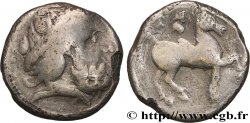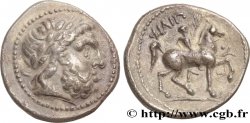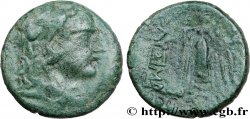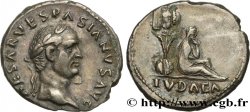Live auction - bga_644218 - DANUBIAN CELTS - TETRADRACHMS IMITATIONS OF PHILIP II AND HIS SUCCESSORS Tétradrachme “à la labrys”
Чтобы принять участие в торгах, вы должны войти в систему и стать подтвержденным участником аукциона. Войдите, чтобы сделать ставку. Ваш аккаунт будет подтвержден в течение 48 часов. Не ждите до закрытия торгов, чтобы зарегистрироваться.Сделав ставку на данный товар, вы вступаете в юридическое соглашение на покупку выбранного товара и нажатием кнопки «Сделать ставку» подтверждаете принятие вами условий интернет-аукционов cgb.fr.
Ставка может бить сделана только в полном эквиваленте евро. Торги закроются согласно времени, указанному в описании товара, все ставки, сделанные после закрытия торгов, учитываться не будут. Не следует откладывать предложение вашей ставки до последнего момента, так как система может не успеть обработать вашу заявку, и ваша ставка не будет принята. Более детальную информацию вы найдёте здесь: FAQ по интернет-аукционам.
Все ставки победителей подлежат комиссии 18%.
Все ставки победителей подлежат комиссии 18%.
| Оценить : | 1 200 € |
| Цена : | 600 € |
| Максимальная предлагаемая цена : | 700 € |
| Конец торгов : | 09 March 2021 16:13:06 |
| Участников : | 1 Участников |
Тип Tétradrachme “à la labrys”
Дата: c. 280-220 AC
Металл: silver
Диаметр: 26,5 mm
Ориентация осей монеты: 3 h.
Вес: 13,98 g.
Редкость: R3
Комментарии о состоянии
Exemplaire sur un flan large bien centré avec le grènetis complet au droit. Tête de Zeus tout à fait particulière associée à la double hache dans le champ devant le visage. Frappe molle au revers avec le métal légèrement piqué. Patine de collection ancienne avec des reflets dorés
Ссылки в каталоге: :
Лицевая сторона
Аверс: легенда: ANÉPIGRAPHE.
Аверс: описание: Tête laurée de Zeus à droite ; grènetis, un petite labrys (double hache) entre le grènetis l’arcade sourcilière de Zeus.
Обратная сторона
Реверс: Описание: Cavalier au pas à droite, tenant une palme de la main droite ; le cheval lève l'antérieur à droite, encadrée d’une torche de course et d’un caducée ; au-dessus du cavalier, la légende.
Реверс: легенда: FILIPP-OU/ L
Реверс: перевод: (de Philippe).
Комментарий
Si le statère d'or de Philippe II de Macédoine a servi de prototype à de nombreuses imitations gauloises, le tétradrachme n'a pas été imité en Gaule, mais reste principal sujet d'inspiration des monnaies pour les Celtes du Danube (LT. 9697-9767, 9768-9832, 9618-9630, 9870-9886). Les premières imitations furent frappées dans le premier quart du IIIe siècle avant J.-C. La fabrication des copies serviles, puis des imitations, enfin des frappes celtiques continuèrent pendant plus de deux siècles. Le revers est connu et était donné pour l’atelier d’Amphipolis, frappé d’après G. Le Rider entre 316/315 et 294 avant J.-C. Le droit est tout à fait exceptionnel avec la présence d’une petite labrys (double hache) placée entre le grènetis et la tête de Zeus. Semble complètement inédit et non recensé. Le seul exemplaire signalé provient de la vente Numismatica Ars Classica (NAC) 78, 26-27 mai 2014, n° 167 (Mêmes coins). C’est le deuxième exemplaire signalé.
While the gold stater of Philip II of Macedon served as a prototype for many Gallic imitations, the tetradrachm was not imitated in Gaul, but remains the main source of inspiration for coins for the Danube Celts (LT. 9697-9767, 9768-9832, 9618-9630, 9870-9886). The first imitations were struck in the first quarter of the 3rd century BC. The manufacture of servile copies, then imitations, and finally Celtic strikes continued for more than two centuries. The reverse is known and was given for the Amphipolis mint, struck according to G. Le Rider between 316/315 and 294 BC. The obverse is quite exceptional with the presence of a small labrys (double axe) placed between the beading and the head of Zeus. Appears to be completely unpublished and unlisted. The only reported example comes from the Numismatica Ars Classica (NAC) 78 sale, May 26-27, 2014, No. 167 (Same dies). This is the second reported example
While the gold stater of Philip II of Macedon served as a prototype for many Gallic imitations, the tetradrachm was not imitated in Gaul, but remains the main source of inspiration for coins for the Danube Celts (LT. 9697-9767, 9768-9832, 9618-9630, 9870-9886). The first imitations were struck in the first quarter of the 3rd century BC. The manufacture of servile copies, then imitations, and finally Celtic strikes continued for more than two centuries. The reverse is known and was given for the Amphipolis mint, struck according to G. Le Rider between 316/315 and 294 BC. The obverse is quite exceptional with the presence of a small labrys (double axe) placed between the beading and the head of Zeus. Appears to be completely unpublished and unlisted. The only reported example comes from the Numismatica Ars Classica (NAC) 78 sale, May 26-27, 2014, No. 167 (Same dies). This is the second reported example







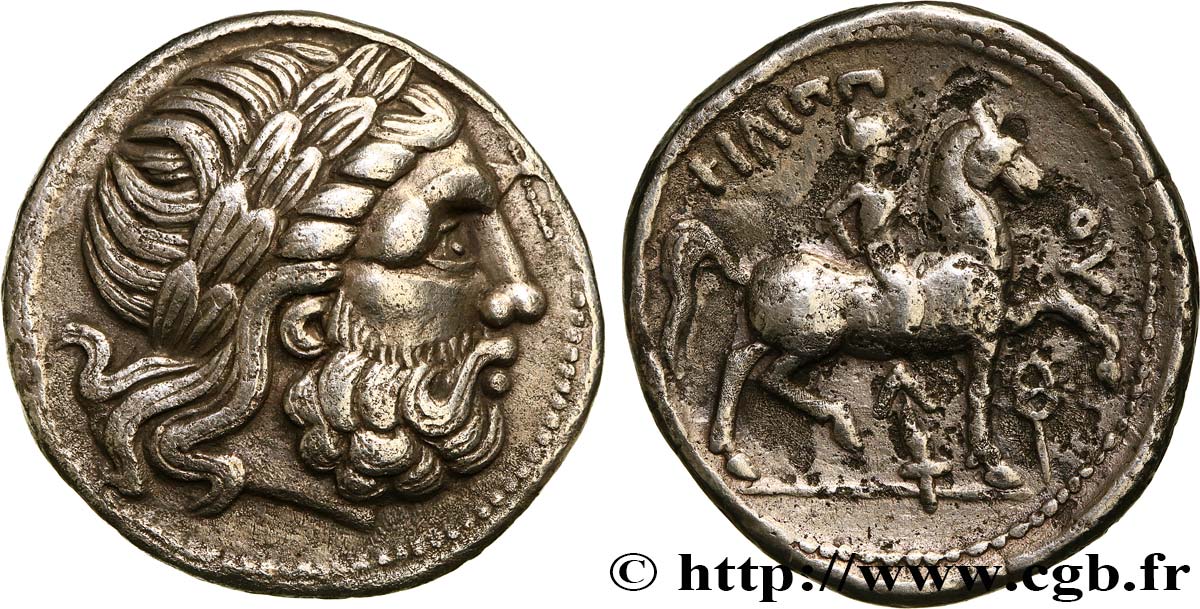
 Cообщить об ошибке
Cообщить об ошибке Распечатать страницу
Распечатать страницу Отправить мой выбор
Отправить мой выбор Задать вопрос
Задать вопрос Consign / sell
Consign / sell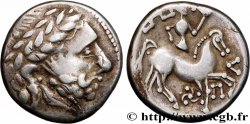
 Информация
Информация

